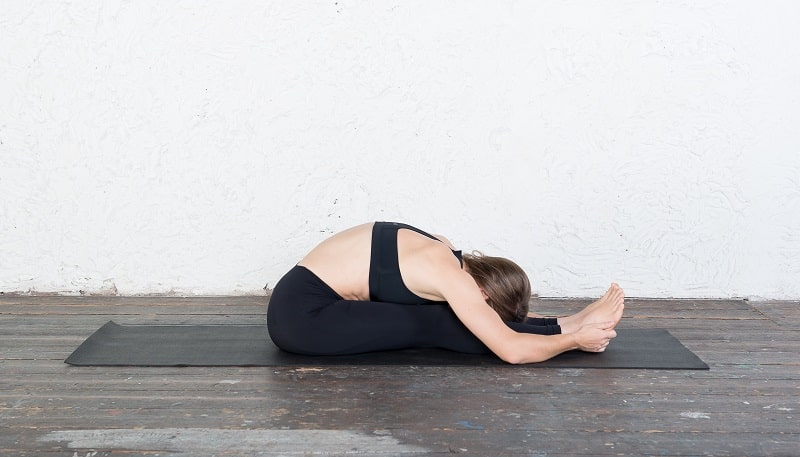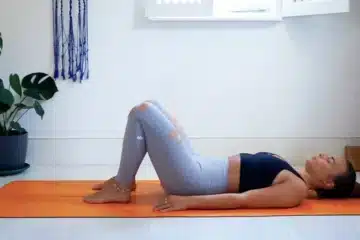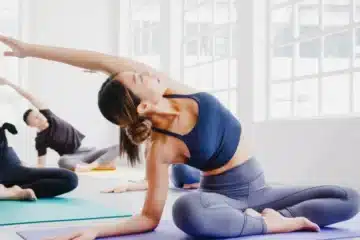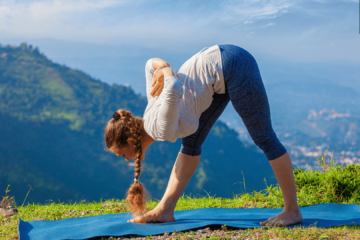In the world of yoga, where movement is often dynamic and invigorating, there exists a posture that invites practitioners to pause, turn inward, and surrender to stillness.
Seated Forward Bend, or Paschimottanasana, emerges as a gentle yet profound asana that offers a myriad of physical, mental, and emotional benefits.
Rooted in the ancient tradition of yoga, this pose encourages practitioners to embrace relaxation, release tension, and cultivate a deeper connection with the self. Let’s delve into the essence of Seated Forward Bend and discover its transformative potential:
Benefits of Paschimottanasana:
- Deep Stretch: Seated Forward Bend provides a deep stretch to the entire posterior chain of the body, including the spine, hamstrings, and calves. This elongation helps alleviate stiffness and tension accumulated from prolonged periods of sitting or standing.
- Stimulates Abdominal Organs: As the torso folds forward, Seated Forward Bend gently compresses the abdominal organs, stimulating digestion and improving metabolism. This can help alleviate digestive discomfort and promote overall gut health.
- Calms the Mind: The gentle compression of the abdomen and the forward folding motion of Paschimottanasana have a soothing effect on the nervous system, promoting a sense of calm and relaxation. This can help reduce stress, anxiety, and fatigue.
- Improves Posture: Regular practice of Seated Forward Bend helps lengthen the spine and improve posture by releasing tension in the back muscles. This encourages a more upright and aligned position, both on and off the mat.
- Enhances Flexibility: Over time, consistent practice of Paschimottanasana can lead to increased flexibility in the hamstrings, hips, and lower back. This not only improves range of motion but also reduces the risk of injury in daily activities and other physical pursuits.
How to Practice Paschimottanasana:
- Starting Position: Begin by sitting on the mat with your legs extended in front of you. Keep your spine tall and your pelvis grounded.
- Foot Flexion: Flex your feet towards you, engaging the quadriceps and activating the muscles along the front of the legs.
- Inhale and Lengthen: Inhale deeply to lengthen your spine, lifting your arms overhead. Feel the expansion in your chest and the elongation of your torso.
- Exhale and Fold: As you exhale, hinge forward from the hips, leading with your chest. Keep your back flat as you lower your torso towards your thighs.
- Hand Placement: Reach for your shins, ankles, or feet, depending on your flexibility. Avoid forcing the stretch; instead, maintain a gentle and relaxed grip.
- Lengthen with Each Breath: With each inhale, lengthen your spine and create space between each vertebra. With each exhale, surrender a little deeper into the pose, allowing your body to relax and release tension.
- Hold and Breathe: Hold Seated Forward Bend for 30 seconds to one minute, breathing deeply and mindfully. Focus on the sensation of the stretch and the rhythm of your breath.
- Release with Care: To exit the pose, inhale as you slowly lift your torso back up, stacking each vertebra one at a time. Take a moment to sit tall and observe the effects of the pose on your body and mind.
Modifications and Variations:
- Bend Your Knees: If you have tight hamstrings or lower back issues, bend your knees slightly to reduce strain on these areas.
- Use Props: Place a yoga strap around the soles of your feet and hold onto the ends to help you reach forward. You can also place a bolster or folded blanket on your legs to support your torso as you fold forward.
- Open Your Feet: Experiment with opening your feet wider than hip-width apart to create space for your torso to fold between your legs.
Precautions:
- Avoid Seated Forward Bend if you have a recent or chronic lower back injury or hamstring injury.
- If you have sciatica or any other nerve-related issues, approach this pose with caution and consider consulting with a healthcare professional or a qualified yoga instructor for guidance.
Conclusion
Seated Forward Bend, with its gentle yet profound stretch, serves as a gateway to relaxation, release, and introspection.
By incorporating Paschimottanasana into your yoga practice, you can unlock the myriad benefits of this transformative pose, fostering greater flexibility, calmness, and inner peace.
Embrace the opportunity to turn inward, surrender to stillness, and connect with the innate wisdom of your body and mind.
As you journey deeper into Seated Forward Bend, may you find solace, serenity, and a renewed sense of well-being.



